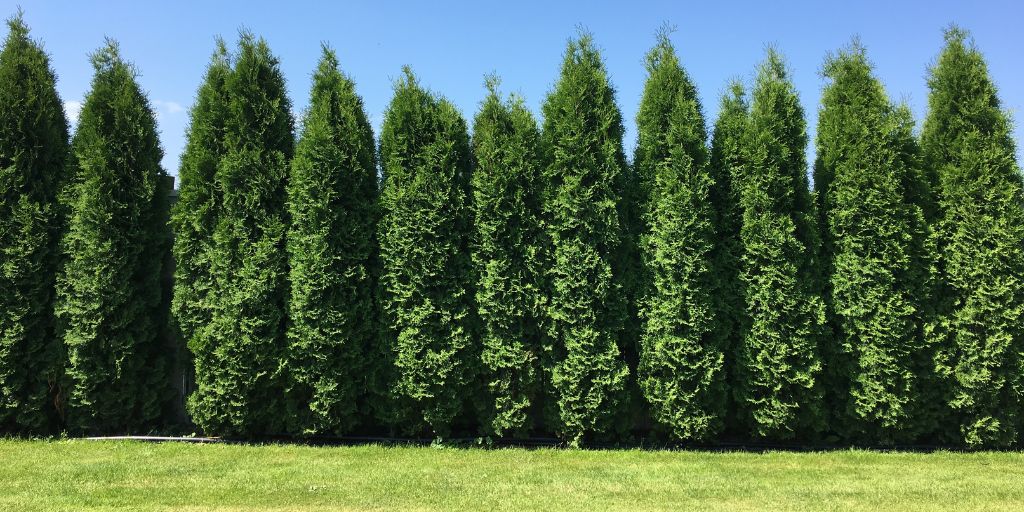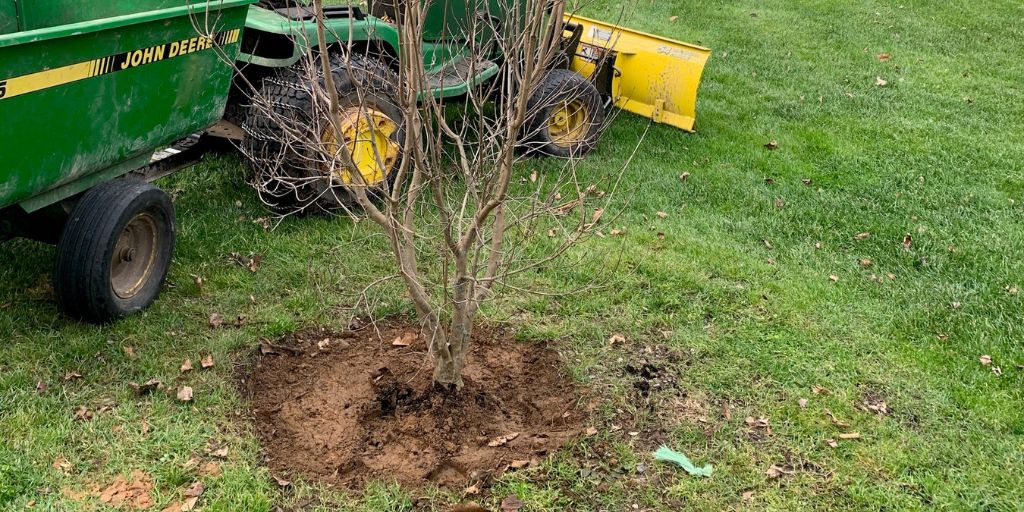Is your landscape prepared for a double threat this winter? Winter in Morris County brings more than just freezing temperatures – it can also bring a hidden threat to your trees: a winter drought. While most homeowners focus on staying warm, our trees struggle with dry soil and frozen ground, which can lead to long-term damage.
Don’t let winter dehydration weaken your trees. Learn why watering during a winter drought is important and how to do it the right way to keep your landscape healthy all season long.
Key Takeaways:
- Winter droughts can severely impact tree health by increasing susceptibility to winter injuries, root damage, and salt sensitivity, making proper winter watering essential for tree survival.
- Only irrigate trees when temperatures are above 40 degrees Fahrenheit with unfrozen ground, and ideally early in the day to allow proper absorption before evening temperature drops.
- When watering trees in winter, apply 10 gallons of water per inch of trunk diameter, focusing on the area under the tree’s drip line to ensure deep soil moisture penetration of at least 12 inches.
- Newly planted trees, evergreens, and trees near roads require extra attention during winter droughts because they are more vulnerable to water stress and salt exposure.

Evergreen foliage may discolor due to winter drought conditions.
The Dangers of Winter Droughts for Your Morris County Trees
Droughts may conjure images of extreme heat and oppressive sunshine, but did you know they are possible in the winter? Winter droughts (like the extended one Morris County suffered through the end of 2024 and the beginning of 2025) can have several consequences for your trees.
“When people hear ‘drought,’ they think of two things: summer and their grass. They tend to forget about their trees and the damage they can suffer in the winter when they don’t have enough water.” – Konrad Polakowski, Crew Lead and Licensed Tree Expert at Alpine Tree
Some of the dangers a lack of adequate water poses to your trees include the following:
- Susceptibility to Winter Injuries: Droughts stress trees and make them more susceptible to winter injuries.
- Root Damage: Without adequate hydration, the roots will become more likely to deal with root rots.
- Damage to Evergreen Foliage: Droughts may cause evergreen needles to become discolored or die.
- Sensitivity to Deicing Salts: A drought-stressed tree is more likely to suffer further damage when exposed to deicing salts.
How to Properly Water Trees During a Winter Drought
Winter drought can severely stress your trees, but with proper watering, you can help them stay healthy until spring. They key is knowing when and how to hydrate them without causing harm.
When to Water Your Trees in Winter
Watering at the wrong time or under the wrong conditions can do more harm than good. Some of the key factors to look at before you hydrate include:
- Recent Precipitation: If there has recently rained or snowed, your trees may not need additional water. Test the soil by digging a two-inch hole and feeling it (if the ground isn’t frozen). If the soil is moist, your trees won’t need water.
- Temperature: Only water when the temperature is above 40°F and the ground is not frozen. If the ground is frozen, the water won’t absorb properly and can create a layer of ice around the tree instead of reaching the roots.
- Time of Day: Water early in the day when temperatures are above 40°F. This allows time for the water to soak into the soil before temperatures drop at night, preventing ice buildup around the roots.
How to Water Your Trees in Winter
Now that you know the timing, it’s time to assemble your tools and actually water trees. Here’s our step-by-step guide to hydrating your trees in the winter during a drought:
- Assemble Your Equipment: For most mature trees, we recommend using a hose with a soaker attachment to irrigate your tree. Alternatively, you can use a five-gallon bucket with a few small holes in the bottom to provide a similar effect.
- Plan Where to Irrigate: Tree roots typically spread as far as the tree is tall. We recommend soaking everything under the tree’s drip line, which is from the trunk to the furthest boundary of its canopy.
- Water the Tree: Soak the ground under the tree’s drip line until moisture reaches 12 inches deep. In general, you should aim to apply 10 gallons of water for each diameter inch of the tree when you measure it six inches from the ground.
- Put Away Your Hose: Once you finish, put away the hose or bucket you are using, as you won’t want your hose to freeze when the temperature drops again.

Newly planted trees are extremely vulnerable to winter droughts and require irrigation to survive.
Trees that Need Extra Attention During a Drought
Some types of trees are more susceptible to droughts than others. The types of trees you should pay special attention to when there is a lack of winter precipitation include:
- Newly Planted Trees: These trees haven’t had a chance to establish a substantial root system, limiting their ability to access water.
- Evergreens: These trees often serve as windbreaks for a property and can dry out quickly.
- Trees Near Roads: Road salt from snow removal adds stress to drought-affected trees near streets. Ensure any trees near the road get adequate hydration.
PRO TIP: For other tips on how to take care of your trees this winter, see our previous articles detailing winter tree care:
Frequently Asked Questions About Winter Tree Watering
Here are answers to Morris County homeowners’ most common questions about winter tree watering during drought conditions. These practical tips will help you protect your valuable trees through the challenging winter months.
Can I water my trees if there’s snow on the ground?
No, we do not recommend hydrating trees if snow is on the ground. The ground will likely be frozen, and the water will not help. Wait until the temperature rises above 40 degrees before working to alleviate dry conditions.
How long should I continue to water my trees in the winter?
Provide supplemental irrigation to your trees as needed. Monitor the precipitation and plan to continue watering until spring, when precipitation generally increases.
Can I use shoveled snow from my driveway to water my trees?
No, do not use shoveled snow from your driveway to water trees. This snow won’t help alleviate drought conditions, and the deicing salt likely mixed into it will actually harm your trees.
Alpine Tree Can Help Your Trees Survive the Winter
Don’t let this winter’s drought put your valuable trees at risk. If you’re concerned about your trees’ health or uncertain about proper winter watering techniques, Alpine Tree’s Certified Arborists are here to help.
We can provide recommendations on the condition of your trees and suggest ways to help them through the winter. Call us today at 973-964-7798 or request an appointment today.




